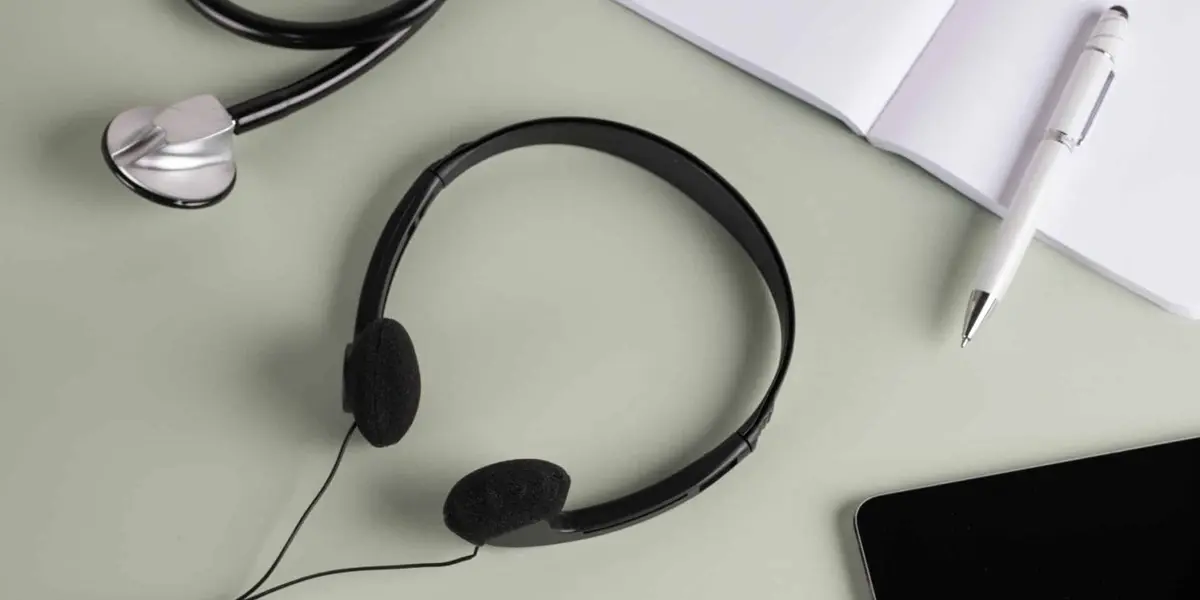Audio Transcends: Sound and Healthcare

Sound is a crucial component of how we experience and perceive the world around us. Whether it exists alone as music or accompanies other media, sound can carry information, augment different sensations, and even evoke strong emotional responses. We’ve long understood the way our bodies conduct sound waves – how cilia in our inner ear turn mechanical signals into neural ones – but we are constantly discovering new lessons about the various ways sound and noise have reverberating effects in our everyday lives.
In this blog series, Audio Transcends, we explore how sound affects our experiences in education, healthcare, and in travel and hospitality. We covered Sound and Education in our last installment, today, we discuss sound and healthcare.
Sound and healthcare

Sound, which can take many forms, has a long history in healthcare and the practice of medicine. Known today as “the father of medicine,” the ancient Greek physician Hippocrates reportedly invented a diagnostic test for detecting fluid in the lungs by shaking patients and listening for sound from the chest. Nowadays, all doctors are trained in the stethoscope, a tool that allows for listening to the heart, lungs, bowels, and more. Ultrasound imaging is a 21st-century technology that uses high-frequency sound waves to provide photoacoustic data of the body – its uses in modern medicine are almost unlimited. Sounds and sound waves have and will continue to play an important role in diagnostic medicine.
There are also therapeutic applications for sound and audio. Sound (typically in musical form) therapy has been extensively explored as a means of inducing relaxation and reducing stress. One study proposes that the mechanism of action of stress relief is tied to nitric oxide (NO) and its role in early auditory system development. Previous research has identified a neuronal pathway that exists between the auditory nerve (nerve responsible for carrying an electrical impulse, converted by the cochlea from mechanical sound waves) and the cortex (a portion of the brain responsible for high-level mental processes). The authors suggest that NO regulates this pathway, both as a neurotransmitter and a hormone.

Sound and music therapy
A 2019 study examined the use of music therapy in hemodialysis patients. These are patients that have chronic kidney disease, a debilitating condition with poor quality of life, due to needing to be hooked up to a dialysis machine for hours at a time, several days a week. Understandably, this population has a high incidence of depression and depressive symptoms. The study in question showed that music therapy (for eight weeks, with two weekly sessions lasting an average of 75 minutes each) resulted in a significant reduction in symptoms of depression and improved quality of life.
Sound therapy has also been used to treat tinnitus (the scientific term for ringing in the ears) and pain. In pain treatment, vibroacoustic music (music that can be felt as bodily vibrations) is currently being studied as an additional tool to manage acute and chronic pain. In one study, an 8-minute orientation with a guided relaxation exercise followed by a 22-minute vibroacoustic session was shown to result in a cumulative pain and symptom reduction of 53%. In these therapy sessions, the patient typically lies down or sits on top of the vibroacoustic equipment, experiencing vibrations of either sound or music throughout the body. Apart from sound, other elements of the environment may also be important, such as lighting and ergonomic comfort. The current body of evidence for vibroacoustic therapy is limited, but it is certainly an exciting avenue of study due to the modality’s safe and non-invasive nature.
In the healthcare space, sound and audio play important roles even outside of diagnosis and treatment. Audio is often an integral part of audio-visual content or communication, which is indispensable for a variety of tasks, including simulation training, CPR feedback, patient-oriented consent or decision aids, and medical student exam feedback. In summary, the uses for audio in healthcare are limitless, and new innovative uses will continue to be discovered as additional research and study are performed.
Join us next week, for the third part of our Audio Transcends blog series, Sound, Travel and Hospitality, and discover how sound and audio listening can greatly enhance the client, customer, or passenger’s experience.
This article was written by Joey Gu and edited by Elizabeth Woodard
Tags:
Wellness



Comments